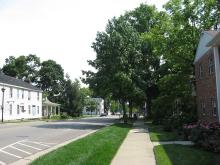Urban Wireless: 5G, CBRS, and How Cities Can Help WISPs – Episode 2 of Connect This!
This week on the show Christopher is joined by Mason Carroll (Monkeybrains), Deborah Simpier (Althea Networks), and returning champion Travis Carter (US Internet).
The group collectively imagines what they would recommend to the FCC if they were called upon to help facilitate urban wireless deployment in the name of more affordable, equitable Internet access. They dig into different approaches, dissect the 5G hype, and mull the recent opportunities offered by Citizens Broadband Radio Service (CBRS). Putting on their private Internet Service Provider (ISP) hats, Mason, Deborah, and Travis tell Christopher what they'd be looking for from cities considering building publicly owned infrastructure — conduit or fiber — in the name of incenting more competition. Finally, they spend some time talking about the particular challenges and solutions presented to urban wireless by apartment complexes and other types of multi-dwelling units (MDUs).
Subscribe to the show using this feed.
Email us [email protected] with feedback and ideas for the show.



